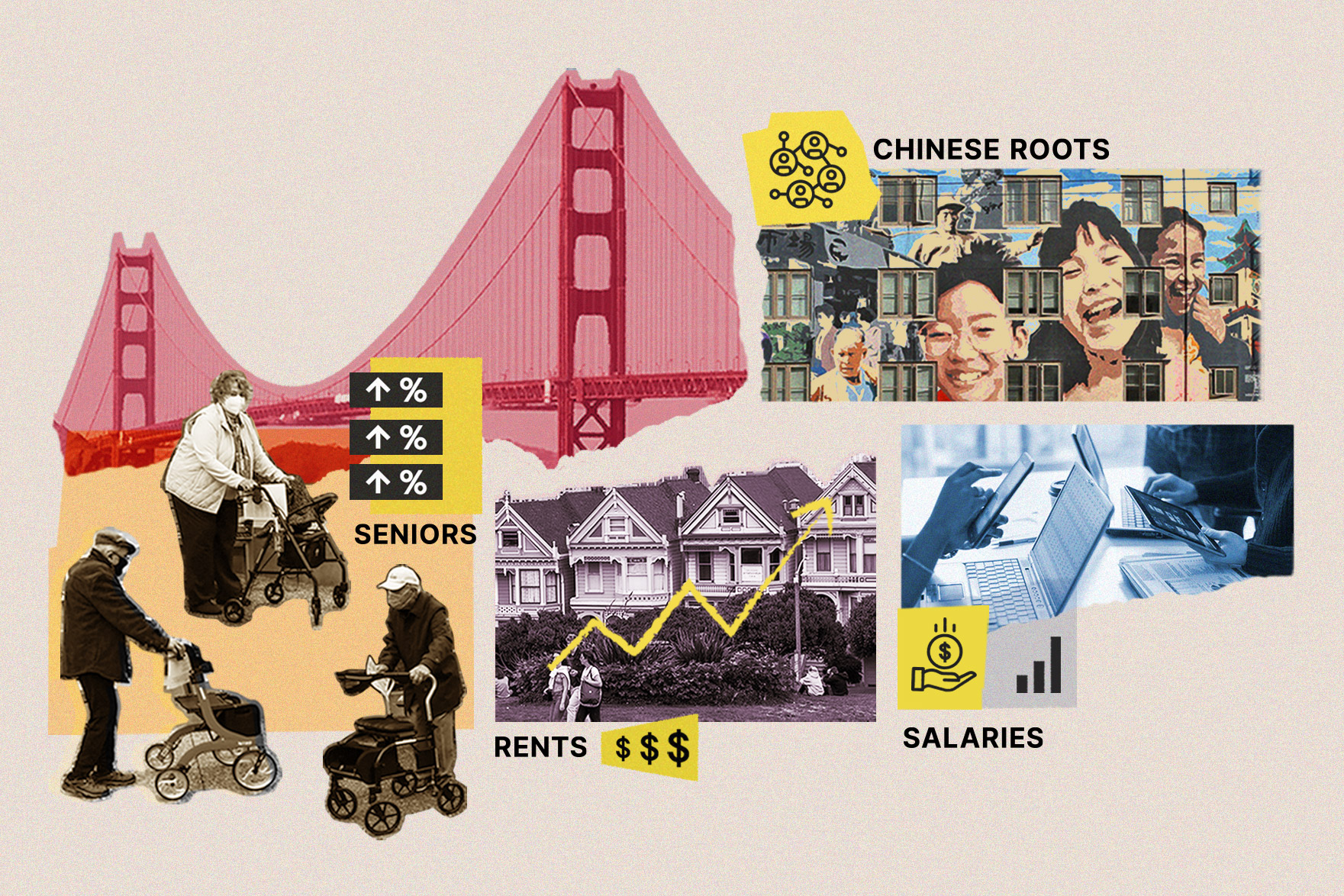San Francisco is not as big as its boosters like to think.
While locals love to compare SF to New York and Los Angeles, the Big Apple is 10 times bigger than the City by the Bay and we’re less than a quarter of the size of LA.
With just north of 815,000 residents, we don’t even make it onto the list of the nation’s top 15 most populous cities.
But as a center of culture, technological innovation and political power, SF has always punched above its weight. So when the U.S. Census Bureau released a trove of new data about cities across the country, The Standard set out to discover: Where did San Francisco lead the nation in 2021?
We compared San Francisco to the 37 American cities with over 500,000 residents on hundreds of metrics recorded by the 2021 American Community Survey. Here’s what we found.
Streets Paved With Gold, Sort Of
San Francisco had more households in the top earning bracket, $200,000 and up, than any other major city in 2021. Nearly a third of San Franciscan households brought home that much.
At a $122,000 median household income, San Francisco was second to just neighboring San Jose for the nation’s highest figure. Even from the second place spot, our median household income was $50,000 higher than the national amount.
Despite the city’s high overall earnings, over a third of SF households took in less than $75,000 in 2021. In fact, San Francisco saw the largest percentage increase in the number of households who used SNAP benefits, also known as food stamps, between 2019 and 2021. That figure more than doubled during that time period, as nearly 42,000 households reported using the assistance in 2021.
Even those with premium paychecks have been stymied by the city’s high cost of living. San Francisco had the nation’s richest renters, high earners who have been boxed out of the pricey housing market.
Deep Chinese American Roots
Chinese Americans made up a larger share of San Francisco’s population than any other major city. Over a fifth of San Franciscans, about 180,000 people, had Chinese roots in 2021. This, of course, aligns with the city’s rich Chinese history that dates back to the Gold Rush days.
While New York City does have a much larger Chinese American population, about 574,000 people, that figure represented just 7% of that city’s total.
Overall, around 40% of San Franciscans were Asian Americans, placing us second in that category to only San Jose, at 42%. Sacramento was in a distant third, at 23%.
An Aging Metropolis
San Francisco is the nation’s oldest major city. Or at least its people are.
SF’s median age was 40.4 in 2021. Las Vegas and Albuquerque were the second and third oldest. Meanwhile, Milwaukee was the youngest large city in the U.S., followed by youthful Fort Worth and Fresno.
We’ve got good genes in San Francisco; a nation-topping 2.6% of residents beat out the U.S. life expectancy and clocked in at 85 years or older. Nearly 21% of San Franciscans were 62 years old or over, placing us second to only Mesa, Arizona.
Meanwhile, there were fewer San Franciscans aged 15 to 19 than in any other city, and that was the case for 20 to 24-year-olds too. With 14% of the SF population under 18, only Seattle had a smaller share of minors. In Fresno, meanwhile, kids represented nearly 28% of residents.
The 2021 census data provides a glimpse into the city’s population changes as it emerged from the first year of the pandemic. Whether SF will continue to lead as the nation’s wealthiest, oldest and most Chinese-American major city as the is yet to be seen, but early data from 2022 from 2022 shows that San Francisco’s pandemic-era exodus may have already tapered off.
